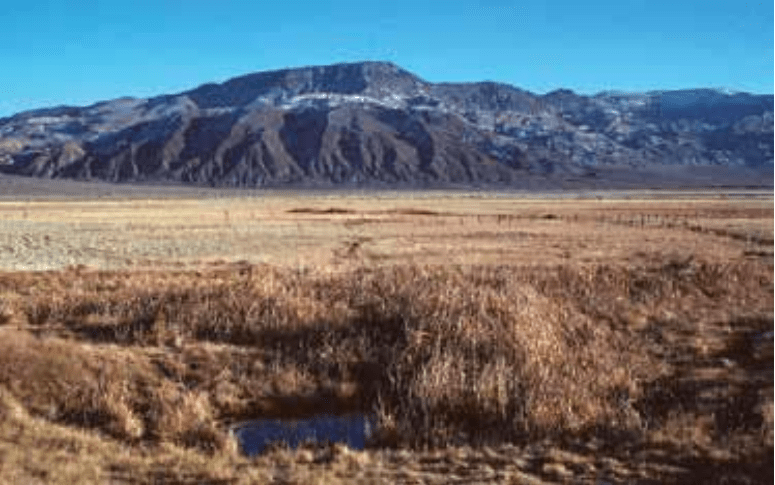Rare fish adds new barrier to Nevada lithium mine

LAS VEGAS (KLAS) — An agreement announced Thursday starts the clock ticking toward Endangered Species Act protection for a Nevada fish that could become a household name — the Fish Lake Valley tui chub.
The fish lives only in a single spring in a remote area near the Nevada-California border. Developers of the Rhyolite Ridge lithium mine plan to pipe water from the area. But conservationists say that poses a new threat.
“The Fish Lake Valley tui chub is staring down the barrel of extinction due to a variety of threats to the water it needs to survive, including unsustainable alfalfa growing, lithium mining and geothermal energy,” Patrick Donnelly, Great Basin director at the Center for Biological Diversity, said Friday.
“If the Bureau of Land Management approves the Rhyolite Ridge Mine, it will only hasten this fish’s slide toward extinction and increase the likelihood that it gets listed as endangered,” Donnelly said.
It’s the latest salvo in the conservation organization’s fight against Australia’s Ioneer Ltd., the company that has been planning what could become the third lithium mine in the U.S., set to begin production as early as 2027.
A draft environmental impact statement released earlier this month included modifications for the 7,000-acre mining site for Tiehm’s buckwheat, a wildflower that is unique to the area. The tui chub could be the next barrier.
“Ioneer understood that concerns were being raised about Fish Lake Valley Tui Chub some time ago,” an Ioneer spokesperson said Friday. “That gave Ioneer an opportunity to consider the potential impact of the project on Fish Lake Valley Tui Chub habitat. We are confident our project will have no impact.”
The agreement between the Center for Biological Diversity and U.S. Fish & Wildlife Service (USFWS) would put the Fish Lake Valley tui chub on track to be listed by May 17, 2025. That’s the deadline established to make a decision on whether the fish should be protected under the Endangered Species Act.
“Once found at several locations in Fish Lake Valley in Esmeralda County, Nevada, the tui chub now survives only in a single isolated spring at a privately owned ranch. Groundwater overpumping threatens to dry up their last stronghold,” according to Thursday’s announcement from the center.
The agreement covers other species and establishes USFWS deadlines for decisions:
Humboldt Marten — ferocious mammals devastated by widespread trapping and logging (will receive designation of protected critical habitat)
Alligator Snapping Turtle and Suwannee Alligator Snapping Turtle — freshwater turtles known for their spiked shells, large claws and strong, beaked jaws (will receive final Endangered Species Act protections by the end of 2024)
Mt. Rainier white-tailed ptarmigan — one of the few animals that live on alpine mountaintops throughout their entire life (will receive final Endangered Species Act protections by the end of 2024)
Peñasco least chipmunk — found only in the Sacramento and White mountains of southwestern New Mexico (will receive final Endangered Species Act protections by the end of 2024)
Barrens Topminnow — small Tennessee fish only found in a couple streams (will receive designation of protected critical habitat)
Pearl River Map Turtle — often called “sawbacks” for the ridges along their backs that can form small spikes (will receive designation of protected critical habitat)
Texas fatmucket, Guadalupe fatmucket, Texas fawnsfoot, Texas pimpleback, False spike and Guadalupe orb — six species of freshwater mussels found in the Brazos, Colorado, Trinity and Guadalupe river basins (will receive final Endangered Species Act protections by the end of 2024)
Tall Western Penstemon — a wildflower with five known populations from southwestern Washington to northwestern Oregon (decision by Sept. 1, 2026)
A 2021 petition to consider Endangered Species Act protections for the tui chub says only five states have more endemic species than the 173 found in Nevada.
A recent Nevada Supreme Court ruling supports the State Water Engineer’s authority to manage water decisions that take into account how actions in one part of a groundwater basin can affect water available at other locations.
The Rhyolite Ridge mine water pipeline will go right by the spring where the tui chub lives, Donnelly said, adding that Ioneer plans to pump groundwater from the same aquifer several miles up the valley.
For the latest news, weather, sports, and streaming video, head to KLAS.

